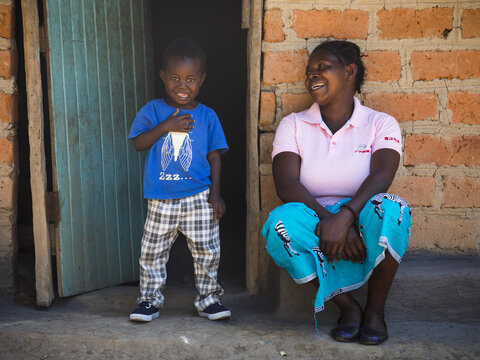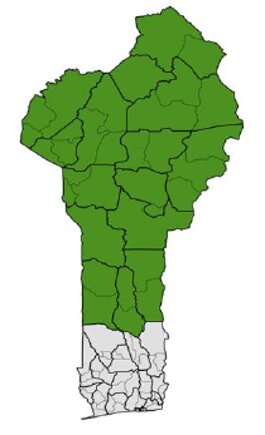SMC Coverage 2023

SMC was implemented for the first time in Benin in 2019. Four health areas were initially covered. By 2021, six health districts were covered. With the update of the WHO guidelines as well as the stratification of the districts, together with additional funding from USAID and the Global Fund, five additional districts were reached with SMC in 2023.
In Benin, 60% of malaria cases are recorded during a five-month period. As such in two districts, five cycles of SMC are implemented while in the others, four cycles are implemented. Door-to-door administration of SMC is carried out.
In 2020, the National Malaria Programme (NMP) adopted a new community health policy based on WHO guidelines to replace the old policy that has lacked effective coordination since 2011. The primary goal of the new policy is to establish a robust and resilient community health system in Benin by 2030, ensuring comprehensive and sustainable health care.
Six municipalities have begun the implementation of the policy. Two of these municipalities are also carrying out SMC. In these two municipalities, the relais communautaires (community health workers) supervised SMC delivery of the first dose distribution which took place during the first week. In the second week, the second and third doses were administered by the caregivers.
A coverage survey was conducted and revealed that SMC coverage for the areas implementing the community health policy has increased across the first 3 courses of SMC. Greater adherence by parents and caregivers was also observed. However, for the fourth course, lower coverage levels of SMC were observed owing to delayed payment of health workers.
In addition to the above, insufficient communication on the community health system delivers poor results. This was observed when comparing two districts where communication was improved in one district versus the other.
Areas eligible for SMC and areas where SMC is implemented in 2023

|
SMC Coverage Details |
2023 |
2024 |
|
Dates for the beginning and end of the cycle |
July - October |
|
|
Number of cycles |
4 |
|
|
Number of districts targetted |
15 |
|
|
Number of children targetted |
- |
|
|
Age range covered |
3 to 59 months |
|
|
Coverage (% of targeted children reached) |
82% |
|
|
Were tests for the resistance to the medicines carried out? (yes/no) |
No |
|
|
Gap |
- |
|